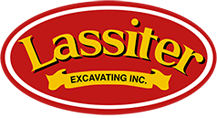How Do We Use Concrete in Landscaping and Building Construction?

Concrete is one of our most common building materials. It comes in various forms depending on the job, but is incredibly versatile and with proper care can last decades.
Concrete a Foundational Material in Construction Work
Concrete and cement are often used interchangeably, but they are different. Simply put, cement is a component of concrete. Cement is made from a fairly complex combination of minerals and metal.
Concrete is a mixture of cement paste and aggregates. “The paste, composed of portland cement and water, coats the surface of the fine and coarse aggregates. Through a chemical reaction called hydration, the paste hardens and gains strength to form the rock-like mass known as concrete.”*
Concrete’s great benefit in construction is its ability to be shaped and formed while still wet, but rock-hard, strong and durable when hardened (set). And when combined with rebar, it also gains considerable tensile strength.
Concrete’s durability and strength also come at a low cost compared to other materials. That makes it a foundational material in the construction of buildings and infrastructure. In our own work, we experience the strength and durability of concrete from both angles: We build with it, and we demolish it when old concrete structures are removed to make way for new buildings, pools or landscaping.
When participating in construction projects as an excavation or pier drilling contractor, we may apply concrete in different ways.
Using Concrete Forms in Construction
Concrete comes in four basic forms, each with unique applications and properties.
1. Ready-mixed concrete is the most common form. The Portland Cement Association estimates that this accounts for nearly three-fourths of all concrete sold and used. It is mixed and loaded into cement mixers for transportation to construction sites.
2. Precast concrete products. These are manufactured in factories before being shipped to job sites. Factory production brings good quality control for a consistent building product. Examples include the concrete bricks and paving stones you see used in retaining walls, foundations and driveways, to large structural components for bridges and other structures. Concrete masonry units can be molded into endless shapes, configurations, colors, and textures to meet building applications and architectural design needs.
3. Cement-based materials. Conventional materials in this category include mortar, grout, and terrazzo. Roller-compacted concrete and other cement-based materials are used for applications as varied as sidewalks and dams.
4. Advanced products. These newer engineered composites incorporate fibers and special aggregates that are used to create products like roofing tiles, shake shingles, and countertops.
The Design Flexibility of Concrete
The ability to shape concrete is one benefit. Another is using additives to improve it look.
- You can color concrete by adding pigments. It helps to use white cement rather than conventional gray cement! You can also use chemical stains, or expose colorful aggregates used in the mixing process.
- You can apply textured finishes. The surface can be treated to add a smooth polish, for instance. Or score, stamp, roll, or inlay geometric patterns into the concrete to make it look like natural stone, brick or paving stones.
- Designers also use divider strips to form geometric panels in the surface. We usually also take steps to make the concrete slip-resistant.
Excavation and Drilling Sub-Contractors Experts at Working With Concrete
We work with concrete just about every day, whether excavating to remove an old pool, drilling and pouring piers to install a solar array, or installing a concrete pad for a new building or parking lot. If you are a landscaper or contractor looking for seasoned, highly regarded excavator and driller for a construction project in Northern California, give us a call or contact us here.
*https://www.cement.org/cement-concrete-applications/how-cement-is-made

